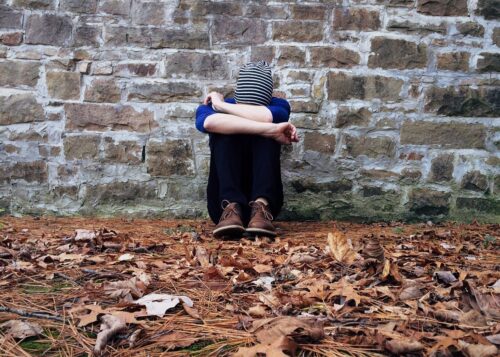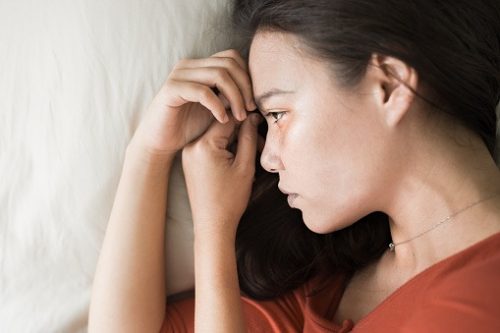Being Sad Due To Health Problems
Sadly, I got diagnosed with lung cancer at the young age of 9. It was likely caused by second-hand smoke, considering my parents were chain smokers. I was not allergic to it from the beginning, so they did not feel the need to stay away from me whenever they had cigarettes on. They never thought I could get affected like this, so despite their full knowledge of keeping the smoke away from their kid, they continued doing what they thought was not that big of a deal – smoking.
Fortunately, they stopped as soon as we got my health diagnosis. It was cancer. My parents became responsible for what they brought into the house, and they changed their lifestyles, committing to better and healthier ones. They engaged with different people and spread awareness of what smoking can do to everyone. They exerted effort to show how they really understand the whole situation and what needs to be done following my chronic health situation. This period of sadness and uncertainty deeply affected our family, but their unwavering support and determination transformed our mood and provided valuable information on how to navigate this challenging journey.
Sadly, the damage had been done – cancer cells had already been activated. I am deeply heartbroken to know that I am at my health limit and that the probability of losing a life is going to happen too soon. I could only go through radiation and chemotherapy to deal with my illness.
Don’t get me wrong, I am not being sarcastic, nor do I blame my parents for their inconsiderate behavior toward smoking. I do not hate them and will never make them feel that they should be feeling sorry for themselves for the rest of their lives just because I now have cancer. I am not like that. My parents were always supportive of me, and I am also here to support them emotionally and mentally.
The Unimaginable Process
If you have seen adults struggling with chemo, you can imagine how much harder it was for a kid like me to battle the intense sadness that came with cancer. It wasn’t about my physical appearance; I couldn’t care less if I lost my hair during the treatment. The most challenging part was swallowing those big pills and having needles stuck in my veins regularly. It wasn’t the type of experience you could ever get used to. Its process is exhausting as it takes a toll on my time and energy. Sometimes it makes me feel sad, like torture, and I often experience sadness along with weight loss.
The treatment was always painful, especially when the same areas of your body would get bruised after experiencing sadness too often. From the third session, when I realized that I still had five months to endure everything, I would often express my feelings of sadness to my parents, telling them that I felt so overwhelmed by the pain and sorrow all the time. Of course, they wouldn’t agree with that, as they wanted me to live a healthy life and have a second chance. Mostly, I saw it as their way of apologizing for being so irresponsible and causing their daughter to experience sadness throughout her entire life.
Once I reached the hospital, I would beg my nurses and doctors to stop treating me and let me be. I was in full pain; that is why I often asked everyone to just allow me to end everything. I wanted to die at that moment because I thought that whatever it was that they were doing, it would only end up killing me in the long run. So the only thing I do every time they try to help me, take me to the machines, and sometimes force me to swallow those pills is to beg them to let me die. But no loved one listens to me.
I am thankful for that now, for sure, but I did not feel that way back then. In reality, there was one thing that everyone said to me that I hated the most. It went along these lines: ‘Don’t cry, little girl. Everything will be okay soon.’ It was a lie, and even my younger self knew it. I did not believe the adults around me whenever they said that; it made me feel sad and caused me to cry even harder because they seemed like they did not want me to go through my emotions. If I had listened to them, I might have had trouble and developed depression because I had zero outlets for my other emotions. But I continue to tell friends and family how much I feel, expressing myself and always discussing my concerns, anger, frustrations, sad feelings, hopelessness, and fear of drying.
I found the best way to engage with those negative thoughts, even when feeling sad, where it involves suicide. I promised myself and held onto that promise. That one day, when things about the awful treatments and medications were over, I would love myself even more. And that when I survived the chemotherapy and became free of all the diseases, I would love everything about life even more. I motivated myself by convincing myself that there’s so much life can offer me once I get better. I encouraged myself to think about health and living because I wanted to see what I would become when I grew up.
It was a miracle actually that I made it. I helped myself get better, and I am so glad that I did not let my negative suicidal thoughts dwell on the sacrifices I have made.

FAQs About Loneliness And Its Connection To Our Health
Is Loneliness Bad For Your Wellbeing?
Keeping your feelings to yourself – sadness, frustration, grief, or anger – may cause your body to be physically stressed and unhealthy. The impact is the same, though the core emotions vary. It is a known fact that this affects one’s self-esteem, sleep, guilt, memory, and blood pressure. Over all, it can greatly affect one’s health.
What Does Loneliness Do To Your Body?
Being miserable or sad can significantly impact your overall well-being. Spending time dwelling on negative thoughts of death can alter the levels of stress-related opioids in your brain — it’s difficult to be sad and healthy at the same time. Additionally, it can lead to an increase in inflammatory proteins in your bloodstream, which are associated with a heightened risk of comorbid illnesses, such as stroke, metabolic syndrome, and heart problems – all of which pose serious health risks.
Is Loneliness A Disease?
Being sad is a natural response to circumstances that may lead to an example of emotional pain or distress. On the other hand, there are differing degrees of sad feelings and a depressed mood.
Do We Need Loneliness To Feel Joy?
Devoid of sadness, happiness is meaningless. Paradoxically, if you are scared of being emotionally sad, you are often unable to feel the heights of happiness. A lot of people live their lives in the middle area. They often don’t experience intense happiness, nor do they feel intense sad and low energy.

Is It Okay To Cry?
Yes, it is. Ways to experience feelings of worthlessness and sadness are human reactions to misery and disappointment. They are also healthy reactions, serving as a natural means of reducing the stress that, if ignored for long periods, could have detrimental effects on your body, both physically and mentally. This includes a heightened risk of developing cardiovascular illnesses and other stress-linked diseases.
Is It Okay To Cry For No Reason?
First of all, nothing is wrong with crying for no reason. Some people cry more often than others, and it is certainly okay. In fact, health professionals say that crying is a great natural stress reliever and it is healthy for people. A person who cries might actually become better than the one who doesn’t.
Is Crying Too Much Bad For You?
Crying has several advantages. However, too much of it might be an indication of depression. Crying as a reaction to one’s feelings like joy, frustration, or sadness, is quite normal.
Does Crying Damage Your Brain?
Health experts say that although animals exposed to extremely high stress levels for long durations could present with changes in their brain configuration, stress due to crying has never been proven to cause brain damage in humans.

Why Do I Usually Cry Easily Even If The Issue Is Not Really A Big Deal?
All of us cry sometimes. However, if you find yourself crying excessively and easily, it might indicate that you are overwhelmed by the stresses in your life or grappling with other issues in your mind, such as feelings of worthlessness, sadness, or depression.
Why Do I Cry When Other People Cry?
The concept of ‘grasping’ others’ feelings is something that health and psychology experts have been delving into. Known as ’emotional contagion,’ it happens when you interact with a person who feels extreme emotions. This, in turn, leads you to grasp that same emotion, sadness is normal.
Is Crying A Sign Of Weakness Of Someone?
No, it’s not. Crying is not a sign or one of the symptoms that you are weak. Conversely, it has been said that if you can cry to get over your problems, you are indeed strong and a healthy person.
Is Massage Good To Relieve One’s Self From Sadness Or Depression?
If you have severe worry, sadness, anxiety, or depression or are just too stressed about life, getting a massage can be part of the whole treatment plan. It can aid you in achieving relaxation, peace of mind, body-mind connection, good health, and empowerment.

What Type Of Massage Is The Best To Relieve Anxiety?
Shiatsu is probably the best massage for individuals who want to achieve relaxation, tension, and stress relief. It is a form of massage that originated in Japan that was developed to promote physical and emotional relaxation.
What Is The Benefit Of Sadness?
How Do You Express Loneliness In A Beneficial Way?
What is it to be happy and sad?
What are the benefits of sadness?
Why being emotional is good?
Final Thoughts
I survived lung cancer 20 years ago. Chemotherapy and radiation therapy were both unpleasant experiences that made me sad and depressed. I only recall the pain when I look at old images of myself. Contrary to popular belief, experiencing sadness made me physically and emotionally healthy. My feelings must be spoken, or they will perish. I could never be brave. I had no idea how brilliant I was as a child. If I could, I’d tell my 9-year-old self that I’m proud of her.


